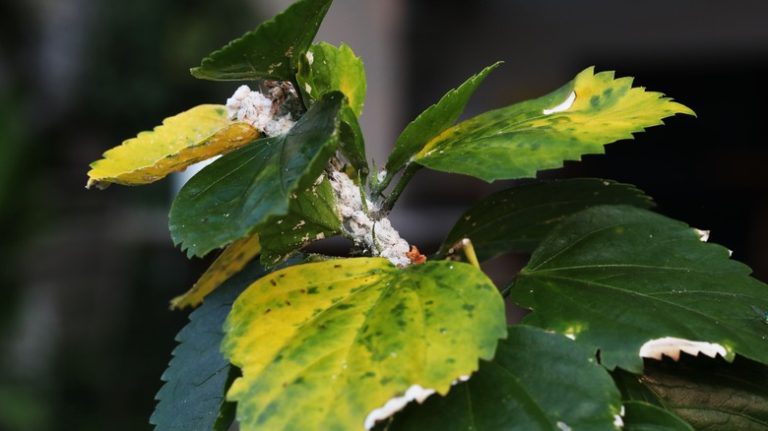If you’re a fan of the color purple, then purple sage bush is the perfect plant for you. Also known as Salvia dorrii, this species of sage is native to the southwestern United States and has beautiful silver-gray foliage. Purple sage bush is a hardy plant that can thrive in a variety of climates and soil types.
When planting purple sage bush, it’s important to choose a spot that gets plenty of sunlight. This plant loves full sun and will suffer if it doesn’t get enough light. It’s also important to ensure that the soil has good drainage, as purple sage bush doesn’t do well in wet conditions.
Once planted, purple sage bush is relatively low-maintenance. It doesn’t require much water and can survive in drought conditions. However, during the hot summer months, it’s a good idea to give the plant a deep watering every few weeks to keep it hydrated.
Pruning is also an important part of caring for purple sage bush. Regular pruning will help to promote healthy growth and keep the plant looking tidy. It’s best to prune purple sage bush in late winter or early spring before new growth begins.
Whether you’re a seasoned gardener or just starting out, purple sage bush is a great addition to any garden. Its vibrant purple flowers and silver-gray foliage add a pop of color and texture to any landscape. With a little care and attention, your purple sage bush is sure to thrive and bring beauty to your outdoor space.
Purple Sage Planting Guide: What Is Purple Sage and Where Does It Grow
Purple sage, also known as Salvia dorrii or Salvia leucophylla, is a beautiful and versatile plant that can add a touch of color and fragrance to any garden. This species is a member of the genus Salvia, which includes over 900 varieties of plants. Purple sage is native to the western United States and is commonly found in desert-style gardens, but it can also thrive in other regions with the right care.
Purple sage is known for its gray-green foliage and the vibrant purple flowers it produces. The plant is drought-tolerant and can survive in dry conditions, making it a good choice for gardeners who live in arid climates. It also requires well-draining soil to thrive and does best in full sun.
When planting purple sage, it is important to choose a spot that receives plenty of sunlight and has good drainage. The plant prefers sandy soils but can also tolerate other types of soil as long as they drain well. It is recommended to amend the soil with organic matter before planting to improve drainage and provide nutrients.
Purple sage can be planted from seed or propagated from cuttings. If planting from seed, it is best to start them indoors before transferring them to the garden. The seeds should be sown in a well-drained potting mix and kept moist until they germinate. Once the seedlings have grown a bit, they can be moved outdoors to their permanent location.
When it comes to care, purple sage is a low-maintenance plant. It requires little fertilizer and should only be watered when the top inch of soil is dry. Overwatering can lead to root rot and other problems, so it is important to provide just enough water to keep the plant healthy.
In terms of pruning, purple sage does not require much attention. It may benefit from occasional trimming to maintain its shape and encourage new growth. Pruning should be done in late winter or early spring before new growth begins.
In addition to its beauty and ease of care, purple sage has some interesting facts and uses. It is a butterfly magnet and can attract pollinators to the garden. The plant has also been used for its medicinal properties in traditional Native American and Mexican cultures.
In conclusion, purple sage is a versatile and attractive plant that can thrive in a variety of growing conditions. It is a great option for gardeners looking to add color and fragrance to their gardens, especially in arid climates. With proper care and attention, purple sage can live for many years and bring joy to any garden.
Purple Sage Planting Guide
Purple sage, also known as Salvia dorrii or Salvia leucophylla, is a beautiful plant that adds a pop of color to any garden. It is a native species to the southwestern United States and Mexico and thrives in hot, arid climates. If you’re considering planting purple sage, this guide will provide you with all the information you need for a successful growth.
| What | Where | How |
|---|---|---|
| Plant | Full sun spot with well-draining soil | Plant purple sage in the spring or early winter for the best chance of survival. Make sure to amend the soil with sand or gravel to improve drainage. |
| Water | Minimal watering needs | Purple sage is a drought-tolerant plant and only needs water when the soil is dry. However, it can tolerate some rain during the winter. |
| Soil | Well-draining soil | Purple sage prefers sandy or gravelly soils with good drainage. It won’t thrive in heavy clay or wet soils. |
| Growth | Slow-growing plant | Purple sage grows slowly but will form a bushy, compact shape over time. Regular pruning can help maintain its form and promote healthy growth. |
| Light | Full sun exposure | For the best foliage color, purple sage needs plenty of sunlight. It can tolerate some light shade, but full sun will bring out its vibrant purple-gray leaves. |
| Propagation | From seed or cuttings | Purple sage can be propagated from seeds or stem cuttings. They’re relatively easy to grow, making it a good option for beginner gardeners. |
| Fertilizer | Minimal fertilizer needs | Purple sage doesn’t require much fertilizer. A light application of a balanced fertilizer in the spring will be sufficient for healthy growth. |
| Temperature | Tolerates heat and cold | Purple sage is adapted to withstand a wide range of temperatures. It can tolerate high heat in summer and even withstands cold temperatures in winter. |
| Humidity | Low humidity needs | Purple sage prefers dry climates with low humidity. It may struggle in areas with high humidity and may require extra care to prevent fungal diseases. |
| Common Varieties | Leucophylla, dorrii, and many more | There are several varieties of purple sage, including Salvia leucophylla and Salvia dorrii. Each variety has its own unique traits and characteristics. |
By following this planting guide, you can successfully grow purple sage in your garden. Its vibrant purple blooms and attractive gray-green foliage will add a touch of beauty to your outdoor space. Whether you live in a hot desert climate or a more temperate region, purple sage is a perfect plant for reference as it is easy to care for and will thrive in a variety of conditions.
Purple Sage Plant Facts
Purple sage, also known as gray-green sage or salvia, is a common plant loved by many gardeners for its beautiful purple blooms and silver-gray foliage. It is a species of the salvia genus, where there are nearly 900 different varieties to choose from.
When it comes to caring for purple sage, it is a relatively low-maintenance plant that can survive in a variety of soils and light conditions. It thrives best in full sun, but can also tolerate partial shade. Purple sage is a drought-tolerant plant, making it a good choice for those looking to conserve water.
When planting purple sage, it is important to choose a well-draining soil, such as sandy soil mixed with some compost. This will help ensure good root growth and prevent the plant from drowning in heavy rain. If you’re propagating purple sage from seed, it is best to plant it in the early spring or fall.
Purple sage is a hardy plant that can survive harsh winter temperatures, although it may lose some of its foliage. It is known to tolerate temperatures as low as -20°F (-28°C). However, if you live in an area with extreme cold, it is best to provide some extra winter protection for your purple sage.
When it comes to watering purple sage, it is important to strike a balance. While it is a drought-tolerant plant, it still needs regular watering to stay healthy and promote good growth. Watering once a week during dry periods should be sufficient, but be sure not to overwater as this can lead to root rot.
Pruning purple sage is not necessary for the plant’s survival, but it can help maintain a neat and tidy appearance. You can prune the plant in early spring to remove any dead or damaged branches and promote new growth. Additionally, pruning can help maintain the shape of the bush and prevent it from becoming too leggy.
Purple sage is loved by butterflies and other pollinators, making it a great addition to any butterfly garden. Its vibrant purple flowers provide plenty of color and nectar for these creatures to enjoy.
Overall, growing purple sage is a rewarding experience. It is a beautiful and hardy plant that will add color and life to your garden. With proper care and attention, your purple sage bush will thrive and provide you with years of enjoyment.
How to Grow Purple Sage Bush
Purple sage, also known as Salvia dorrii, is a species of sage that is a perfect choice for gardeners looking to add color to their desert-style gardens. It is a hardy, drought-tolerant plant that has beautiful purple foliage and blooms. If you’re wondering how to grow purple sage bush, this guide will provide you with all the information you need.
Purple sage is a member of the Salvia genus, which is known for its large variety of sage plants. The Salvia genus includes common sage, as well as other species like silver sage. However, purple sage is unique for its gray foliage and purple blooms.
Purple sage bush prefers full sun, so make sure to plant it in a spot where it will receive plenty of light. It also needs well-draining soil, as it won’t tolerate soggy or waterlogged conditions. Sandy soils are a good choice for purple sage, as they provide good drainage.
When it comes to watering, purple sage bush is fairly low-maintenance. It needs regular watering during its first year of growth to establish a healthy root system. After that, it can tolerate drought and only needs to be watered sparingly. It’s always a good idea to check the moisture level of the soil before watering.
For optimal growth, purple sage bush can benefit from occasional fertilizer. Use a balanced fertilizer in early spring to provide the necessary nutrients. However, be careful not to over-fertilize, as this can lead to excessive foliage growth and fewer blooms.
Purple sage bush is a hardy plant that can survive cold temperatures. It is able to withstand temperatures as low as 20 degrees Fahrenheit (-6 degrees Celsius). However, if you live in an area with very cold winters, it’s a good idea to cover the plant with a layer of mulch or bring it indoors to ensure its survival.
If you want to propagate purple sage bush, you can do so by seed. Collect the seeds from mature plants in the summer and sow them directly into the soil. Keep the soil moist until the seeds germinate. You can also propagate purple sage bush through cuttings. Take a 4 to 5-inch cutting from the parent plant, remove the lower leaves, and place it in a pot filled with a well-draining soil mix. Keep the soil lightly moist until roots develop.
Overall, purple sage bush is a beautiful and low-maintenance plant that is a great addition to any garden. It attracts butterflies and other pollinators and adds a vibrant pop of purple color. Follow this guide to successfully grow purple sage bush and enjoy its beauty for years to come.


